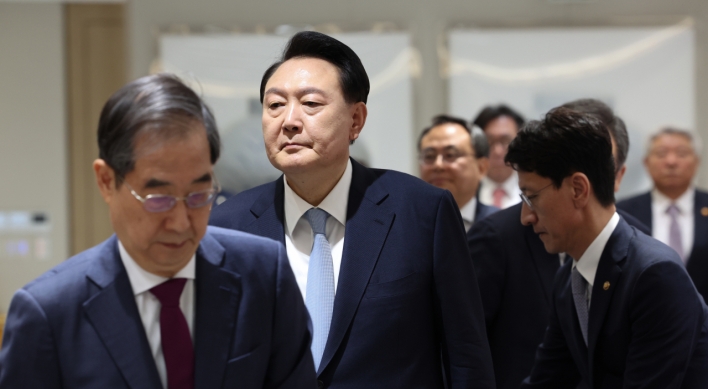Proposed dam on the Mekong should not go ahead until all social and environmental concerns are addressed
International pressure is mounting as 263 non-governmental organizations from 51 countries step up their campaign to get Thailand to cancel the proposed Xayaburi Dam on the Mekong River’s mainstream in northern Laos. In a recent letter sent to the governments of Laos and Thailand, the NGOs urged all parties to cancel plans to build this destructive project, saying public and international credibility are at stake, as well as the ecology of the affected area and the huge number of people who depend on it for their livelihood and food security.
Environmental groups, scientists and others who have been following this project say it has serious flaws and it represents an unacceptable threat to the lives of millions of people in Thailand, Laos, Cambodia and Viet Nam.
“The dam’s environmental impact assessment report, released last week, is totally inadequate,” Ame Trandem of International Rivers says. The U.S.-based group says the assessment lacks basic yet critical technical information. Other critics say the EIA was written to downplay the dam’s impact on fisheries and was deliberately released late (a final decision must be made by April 23) to minimize public opposition.
Unfortunately, Thai Prime Minister Abhisit Vejjajiva, during a recent dinner with members of the Foreign Correspondents’ Club of Thailand, was dazed when the issue was put to him. The P.M. appeared to confuse this dam ― which would be built by the Thai firm Ch Karnchang but is supported by Vientiane ― with another proposed by the Samak government near Ubon Ratchathani, which his government ditched; with good reason. But the P.M.’s apparent lack of awareness of the project has raised alarm bells, because the Xayaburi Dam looms as an environmental nightmare, partly because it could open the door to a dozen or so dams on the lower Mekong and destroy vast fish resources.
Trandem, of International Rivers, says the report failed to consider transboundary impacts, despite a warning from the Mekong River Commission that the environmental and social impacts will be irreversible and will be felt basin-wide should the project go ahead. “Given the quality of the EIA and the anticipated impacts, if this project goes ahead it would be unimaginably irresponsible,” she said.
But there are fears, based partly on recent history, that the demands from environmentalists may fall on deaf ears. The Lao government appears determined to press ahead with the project ― despite reports it could cause tension with Hanoi because of huge public concern in Viet Nam’s “rice bowl,” the Mekong Delta. There are already reports of earth-moving equipment near the proposed dam site, about 30km south of Luang Prabang
The sustainability of livelihoods ― for the tens of thousands who survive off fishing in Thai and Lao villages south of Chiang Khong, the vast number of Cambodians living around the huge Tonle Sap lake, and Vietnamese rice-growers in the lower reaches of the river ― is not at the heart of the decision-making process.
The Xayaburi Dam is a $3.5 billion project that was first proposed in 2007. While the dam is being pushed by Laos, it is essentially a Thai development. It would be funded by four Thai banks ― Kasikorn, Siam Commercial, Bangkok Bank and Krung Thai ― and about 95 percent of the 1,260 megawatts of electricity to be generated would be sent to Egat, Thailand’s state energy body. Thai environmental groups are suspicious and question how the P.M. could not be aware of this project, when he chairs the National Energy Commission, and must surely know Egat signed a memorandum of understanding for a power purchase agreement with Laos in July last year.
Thai villagers living adjacent to the river are fearful. At a public meeting about the dam on March 12, Kamol Konpin, the mayor of Chiang Khan, said: “As local people have already suffered from dams built upstream in China and watched the ecosystem change, we are afraid the Xayaburi Dam will bring more suffering. Our lives and livelihoods depend on the health of the Mekong River.”
If the Xayaburi Dam goes ahead, more than 2,100 people will have to be resettled and a further 202,000 living near the dam will be directly affected by impacts on the river’s ecology and fisheries. More than 41 fish species, including the Mekong giant catfish, will face the threat of extinction, according to fish experts and environmentalists.
Last October, a strategic environmental assessment, commissioned by the MRC, recommended a 10-year deferment in decision-making on dams on the Mekong mainstream, including the Xayaburi, due to an incomplete state of knowledge and the huge environmental and social risks. But the attitude of the builders, purchaser and financiers tells a different story. They continue to be indifferent to the recommendations and warnings.
As responsible members of the global community, Thailand, Egat, Ch Karnchang and the four Thai banks have a moral obligation to consider the well-being of people who will be directly affected by the dam’s construction. At the very least, there should be a delay in approving dams on the lower Mekong to ensure a comprehensive understanding of all possible negative effects. The risks involved are simply too great.
(Editorial, The Nation (Thailand))
(Asia News Network)
International pressure is mounting as 263 non-governmental organizations from 51 countries step up their campaign to get Thailand to cancel the proposed Xayaburi Dam on the Mekong River’s mainstream in northern Laos. In a recent letter sent to the governments of Laos and Thailand, the NGOs urged all parties to cancel plans to build this destructive project, saying public and international credibility are at stake, as well as the ecology of the affected area and the huge number of people who depend on it for their livelihood and food security.
Environmental groups, scientists and others who have been following this project say it has serious flaws and it represents an unacceptable threat to the lives of millions of people in Thailand, Laos, Cambodia and Viet Nam.
“The dam’s environmental impact assessment report, released last week, is totally inadequate,” Ame Trandem of International Rivers says. The U.S.-based group says the assessment lacks basic yet critical technical information. Other critics say the EIA was written to downplay the dam’s impact on fisheries and was deliberately released late (a final decision must be made by April 23) to minimize public opposition.
Unfortunately, Thai Prime Minister Abhisit Vejjajiva, during a recent dinner with members of the Foreign Correspondents’ Club of Thailand, was dazed when the issue was put to him. The P.M. appeared to confuse this dam ― which would be built by the Thai firm Ch Karnchang but is supported by Vientiane ― with another proposed by the Samak government near Ubon Ratchathani, which his government ditched; with good reason. But the P.M.’s apparent lack of awareness of the project has raised alarm bells, because the Xayaburi Dam looms as an environmental nightmare, partly because it could open the door to a dozen or so dams on the lower Mekong and destroy vast fish resources.
Trandem, of International Rivers, says the report failed to consider transboundary impacts, despite a warning from the Mekong River Commission that the environmental and social impacts will be irreversible and will be felt basin-wide should the project go ahead. “Given the quality of the EIA and the anticipated impacts, if this project goes ahead it would be unimaginably irresponsible,” she said.
But there are fears, based partly on recent history, that the demands from environmentalists may fall on deaf ears. The Lao government appears determined to press ahead with the project ― despite reports it could cause tension with Hanoi because of huge public concern in Viet Nam’s “rice bowl,” the Mekong Delta. There are already reports of earth-moving equipment near the proposed dam site, about 30km south of Luang Prabang
The sustainability of livelihoods ― for the tens of thousands who survive off fishing in Thai and Lao villages south of Chiang Khong, the vast number of Cambodians living around the huge Tonle Sap lake, and Vietnamese rice-growers in the lower reaches of the river ― is not at the heart of the decision-making process.
The Xayaburi Dam is a $3.5 billion project that was first proposed in 2007. While the dam is being pushed by Laos, it is essentially a Thai development. It would be funded by four Thai banks ― Kasikorn, Siam Commercial, Bangkok Bank and Krung Thai ― and about 95 percent of the 1,260 megawatts of electricity to be generated would be sent to Egat, Thailand’s state energy body. Thai environmental groups are suspicious and question how the P.M. could not be aware of this project, when he chairs the National Energy Commission, and must surely know Egat signed a memorandum of understanding for a power purchase agreement with Laos in July last year.
Thai villagers living adjacent to the river are fearful. At a public meeting about the dam on March 12, Kamol Konpin, the mayor of Chiang Khan, said: “As local people have already suffered from dams built upstream in China and watched the ecosystem change, we are afraid the Xayaburi Dam will bring more suffering. Our lives and livelihoods depend on the health of the Mekong River.”
If the Xayaburi Dam goes ahead, more than 2,100 people will have to be resettled and a further 202,000 living near the dam will be directly affected by impacts on the river’s ecology and fisheries. More than 41 fish species, including the Mekong giant catfish, will face the threat of extinction, according to fish experts and environmentalists.
Last October, a strategic environmental assessment, commissioned by the MRC, recommended a 10-year deferment in decision-making on dams on the Mekong mainstream, including the Xayaburi, due to an incomplete state of knowledge and the huge environmental and social risks. But the attitude of the builders, purchaser and financiers tells a different story. They continue to be indifferent to the recommendations and warnings.
As responsible members of the global community, Thailand, Egat, Ch Karnchang and the four Thai banks have a moral obligation to consider the well-being of people who will be directly affected by the dam’s construction. At the very least, there should be a delay in approving dams on the lower Mekong to ensure a comprehensive understanding of all possible negative effects. The risks involved are simply too great.
(Editorial, The Nation (Thailand))
(Asia News Network)







![[KH Explains] How should Korea adjust its trade defenses against Chinese EVs?](http://res.heraldm.com/phpwas/restmb_idxmake.php?idx=644&simg=/content/image/2024/04/15/20240415050562_0.jpg&u=20240415144419)










